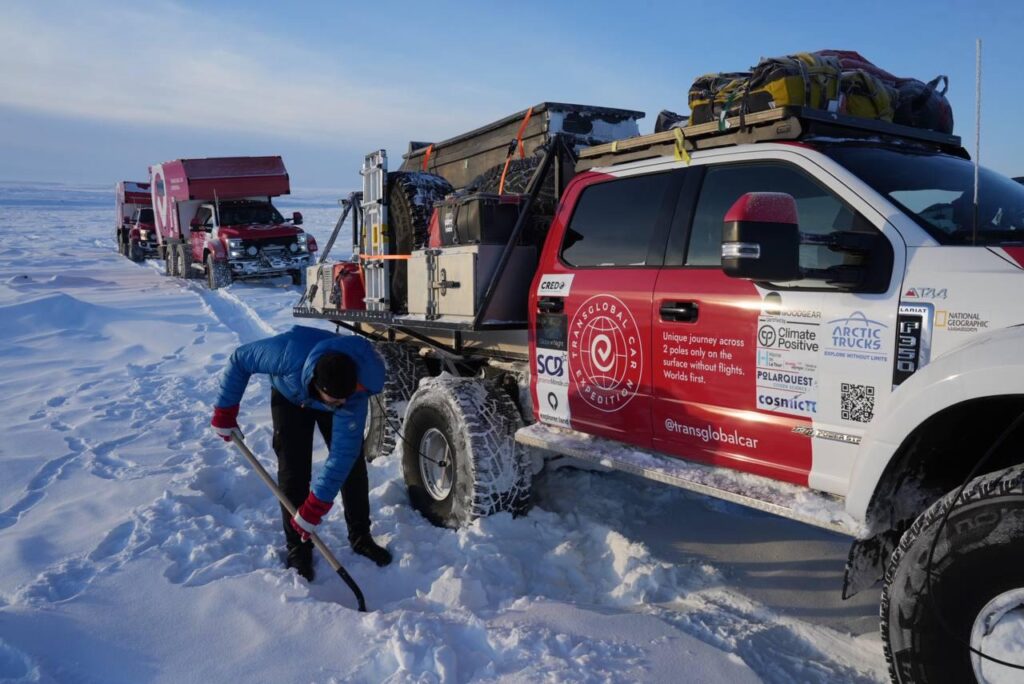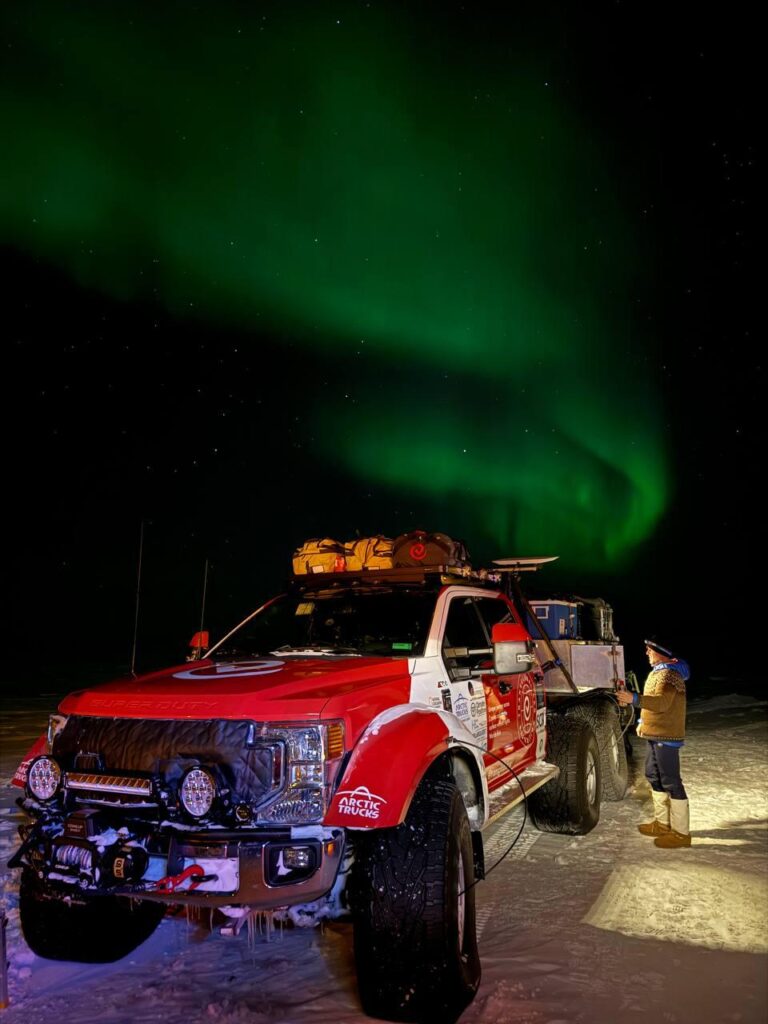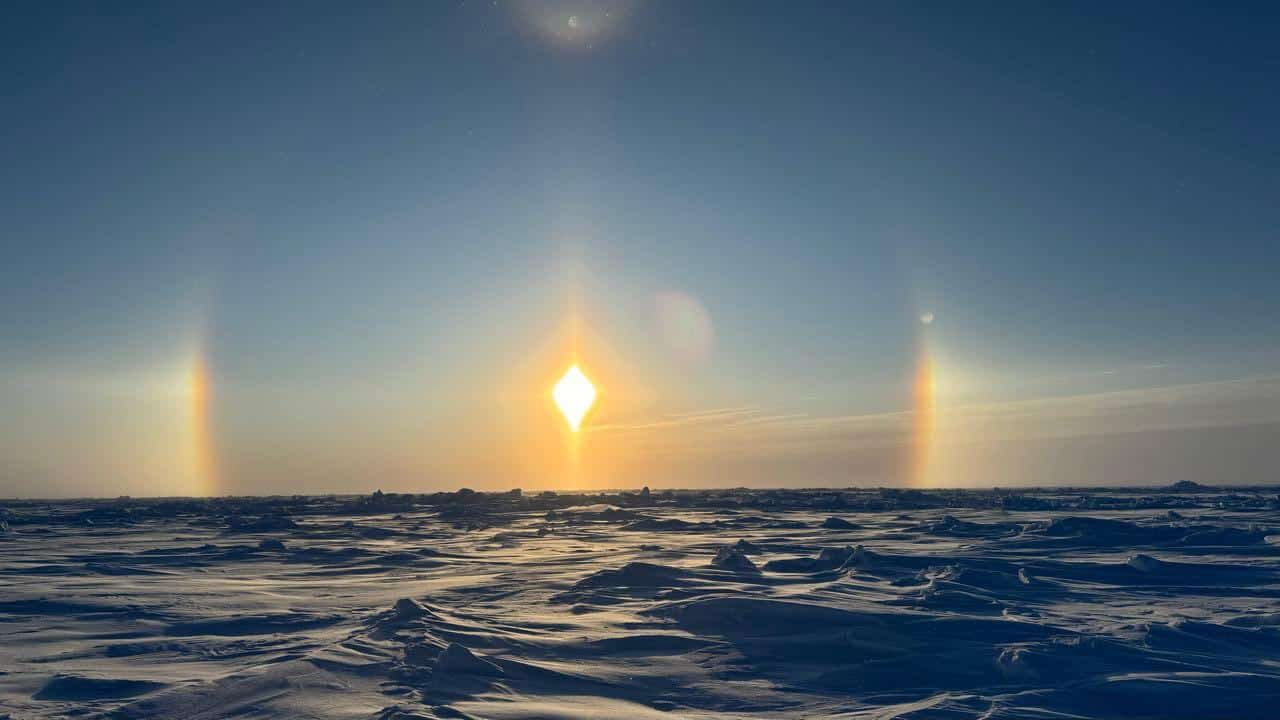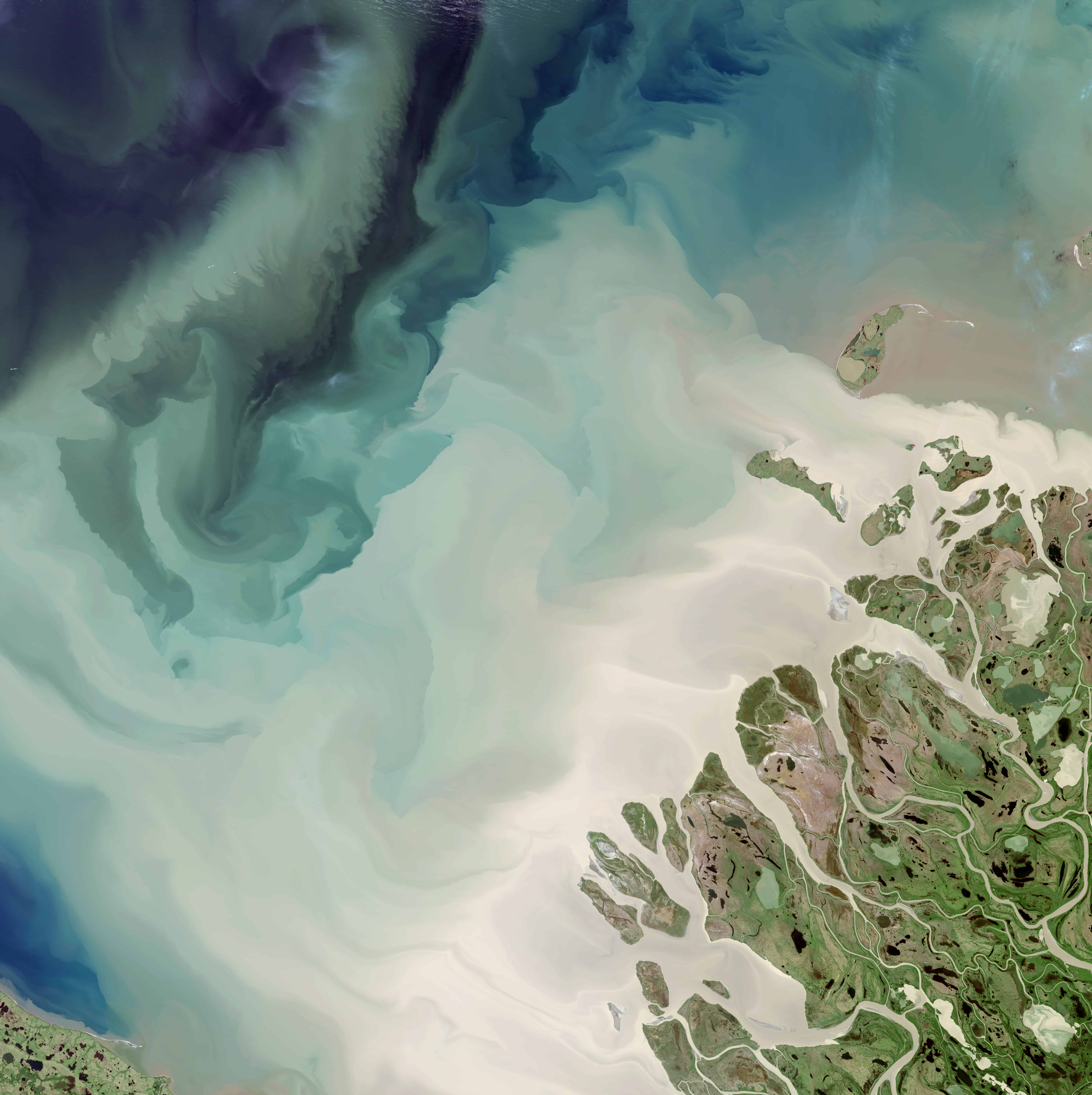The Transglobal Car Expedition has successfully reached the geographic North Pole at 90°N, with SCB’s environmental label ClimatePositive supporting the expedition as the sustainability partner.

The North Pole is the first important milestone of the crew’s circumnavigation of the Earth without the use of flight. The North Pole was reached on Saturday, April 6th, 2024, at 20:30 UTC, a remarkable achievement following four months of challenging cross-continent travel, requiring dedication, resilience, and unwavering spirit.

The crew unexpectedly came across a giant ice hole just 235 km from the North Pole, with midday temperatures up to -12c, which is extremely warm for the season and location. A drone was launched to seek a safe passage, but the water extended far to the horizon. A reconnaissance was unsuccessful as the front axle gearbox failed on the vehicle. The team were able to rearrange the gearbox from the rear axle and thanks to updated satellite images, made it to the Pole.
Experiments run on the expedition by Citizen Scientists through the PolarQuest initiative on CERN equipment include measuring the northernmost cosmic radiation flux ever measured.
“Using the CosmicPi detector ‘Nansen,’ the Transglobal team recorded cosmic ray data at the North Pole” says James Devine, the CERN engineer who developed the CosmicPi detectors. Etam Noah, Cosmic Pi scientist said “These are the very first measurements in history of cosmic rays at this latitude and will help researchers understand these unique particles.”
These measurements were captured on cosmic ray detectors built at CERN using an open hardware design, specifically adapted to endure the environmental extremes of the North Pole. The Transglobal team remains committed to measuring cosmic rays throughout their expedition, providing valuable insights into these particles at every latitude they encounter.
The opportunity to conduct environmental scientific experiments in polar regions is very rare and there are only a very few organisations who are granted permission. There is very little data on the cryosphere from Earth observations due to the hostile environment, multilateral environmental protection, and due to minimal satellite coverage of the poles.
The Transglobal Car Expedition departed northward from New York on January 10th, 2024, beginning an awe-inspiring journey to circumnavigate the Earth. The expedition sees the team attempt to traversing the geographic North and South Poles, before returning back to New York from the south over 18 months later.
The team has now accomplished the northernmost milestone of their journey. “Passage of the North Pole is the most difficult stage of our expedition,” says Vasily Shakhnovskiy, leader of the expedition. “Our final approach required all-day travel, traversing 43.6 km before we reached our parking spot at 90°N. Now that we’re here, it’s a little bit of euphoria. This achievement marks the culmination of years of planning and perseverance.”
 During the journey, the expedition also took advantage of cutting-edge satellite technology. Several satellite systems, initially ESA’s Sentinel-1 and then, at higher latitudes, only ASI’s COSMO-SkyMed, provided synthetic aperture radar (SAR) images along the expedition’s route to help to assist in the very difficult and dangerous Arctic Sea traverse. Thanks also to E-Geos, which took care of programming COSMO-SkyMed acquisitions, images were actually provided on a daily basis, to help map the best route through drifting ice conditions.
During the journey, the expedition also took advantage of cutting-edge satellite technology. Several satellite systems, initially ESA’s Sentinel-1 and then, at higher latitudes, only ASI’s COSMO-SkyMed, provided synthetic aperture radar (SAR) images along the expedition’s route to help to assist in the very difficult and dangerous Arctic Sea traverse. Thanks also to E-Geos, which took care of programming COSMO-SkyMed acquisitions, images were actually provided on a daily basis, to help map the best route through drifting ice conditions.
These important collaborations not only enabled the team to monitor ice conditions and navigate safely through this remote region but also yielded crucial data on ice thickness, contributing significantly to our understanding of polar dynamics and climate change. In addition, the team carried out in-situ measurements of the ice thickness. “This milestone recording of ice thickness at the North Pole underscores the critical need for in-situ measurements in understanding Arctic ice dynamics,” says Christian Haas (AWI, Alfred Wegener Institute) “While satellite monitoring offers valuable insights, the scarcity and uncertainties surrounding ice thickness data hinder the compilation of consistent datasets. The measurements taken by the Transglobal team remain the gold standard, providing invaluable validation for airborne and satellite observations.”
The journey to the North Pole represents the culmination of five years of perseverance and dedication. Despite navigating through a global pandemic and facing logistical challenges, the team’s unwavering determination, fuelled by the exceptional quality of its members, led to this remarkable achievement. Shakhnovskiy expressed heartfelt gratitude to the team and supporters, stating, “The reason we’ve persevered through every obstacle is the exceptional quality of people on our team, both at the North Pole and across the globe providing support. Your dedication and support have been invaluable.”
Follow the Transglobal Car Expedition’s remarkable journey as they continue to push the boundaries of exploration and scientific discovery. Stay updated on their progress and groundbreaking research by visiting: https://transglobalcar.com/
By supporting this mission as a ClimatePositive partner, the team is assured that despite the fact they are creating carbon emissions to perform essential duties to humankind, their efforts are compensated for through Climate Action.



